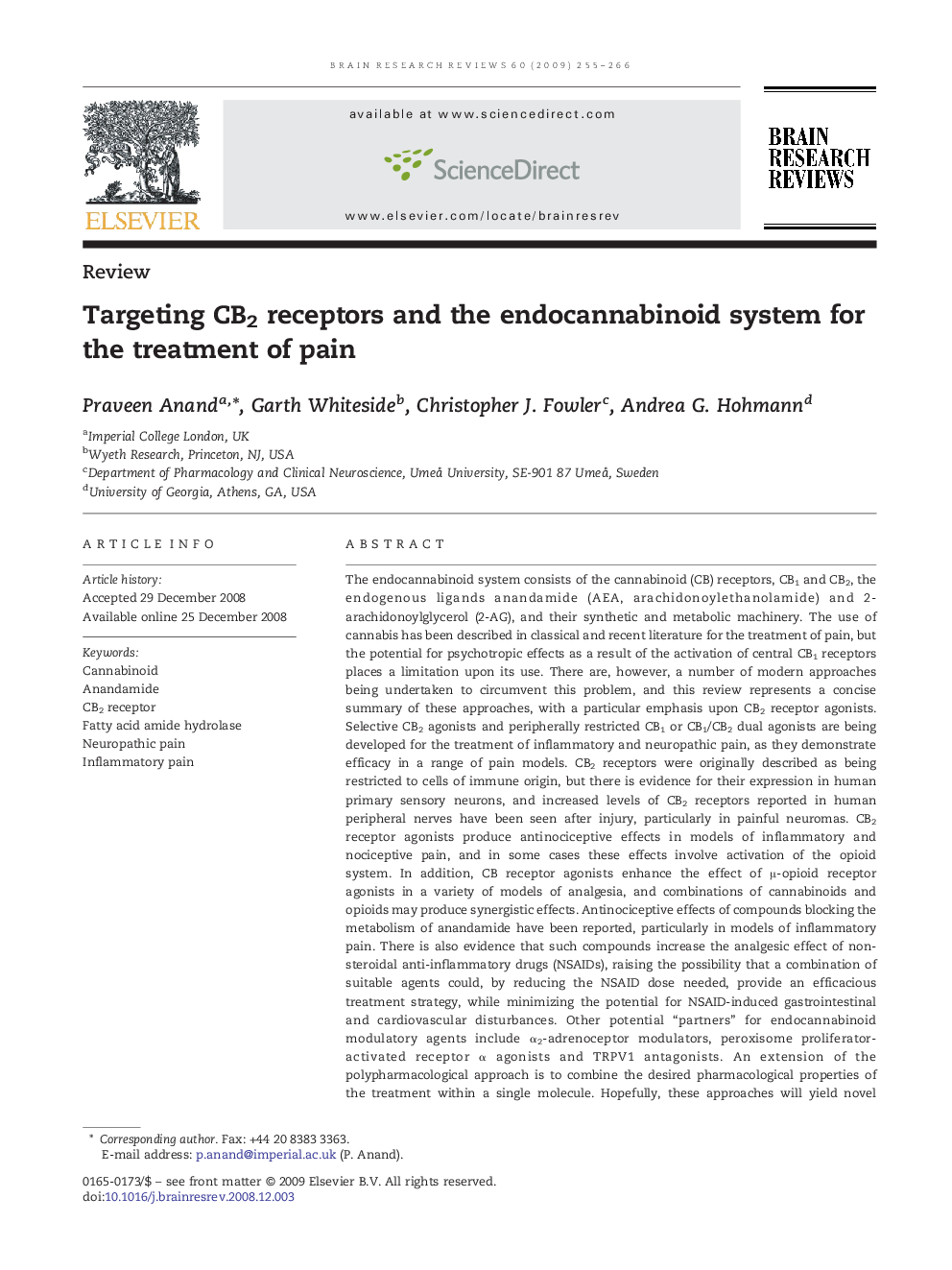| Article ID | Journal | Published Year | Pages | File Type |
|---|---|---|---|---|
| 4333820 | Brain Research Reviews | 2009 | 12 Pages |
The endocannabinoid system consists of the cannabinoid (CB) receptors, CB1 and CB2, the endogenous ligands anandamide (AEA, arachidonoylethanolamide) and 2-arachidonoylglycerol (2-AG), and their synthetic and metabolic machinery. The use of cannabis has been described in classical and recent literature for the treatment of pain, but the potential for psychotropic effects as a result of the activation of central CB1 receptors places a limitation upon its use. There are, however, a number of modern approaches being undertaken to circumvent this problem, and this review represents a concise summary of these approaches, with a particular emphasis upon CB2 receptor agonists. Selective CB2 agonists and peripherally restricted CB1 or CB1/CB2 dual agonists are being developed for the treatment of inflammatory and neuropathic pain, as they demonstrate efficacy in a range of pain models. CB2 receptors were originally described as being restricted to cells of immune origin, but there is evidence for their expression in human primary sensory neurons, and increased levels of CB2 receptors reported in human peripheral nerves have been seen after injury, particularly in painful neuromas. CB2 receptor agonists produce antinociceptive effects in models of inflammatory and nociceptive pain, and in some cases these effects involve activation of the opioid system. In addition, CB receptor agonists enhance the effect of μ-opioid receptor agonists in a variety of models of analgesia, and combinations of cannabinoids and opioids may produce synergistic effects. Antinociceptive effects of compounds blocking the metabolism of anandamide have been reported, particularly in models of inflammatory pain. There is also evidence that such compounds increase the analgesic effect of non-steroidal anti-inflammatory drugs (NSAIDs), raising the possibility that a combination of suitable agents could, by reducing the NSAID dose needed, provide an efficacious treatment strategy, while minimizing the potential for NSAID-induced gastrointestinal and cardiovascular disturbances. Other potential “partners” for endocannabinoid modulatory agents include α2-adrenoceptor modulators, peroxisome proliferator-activated receptor α agonists and TRPV1 antagonists. An extension of the polypharmacological approach is to combine the desired pharmacological properties of the treatment within a single molecule. Hopefully, these approaches will yield novel analgesics that do not produce the psychotropic effects that limit the medicinal use of cannabis.
